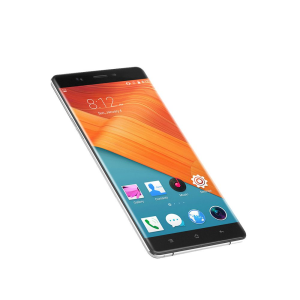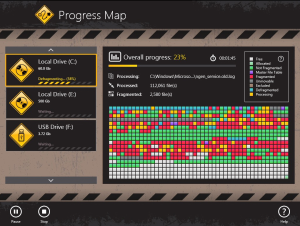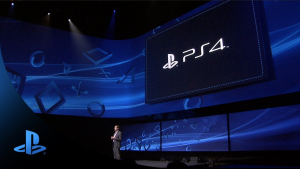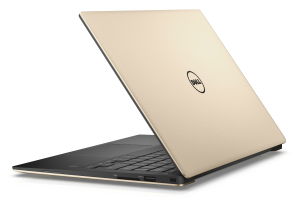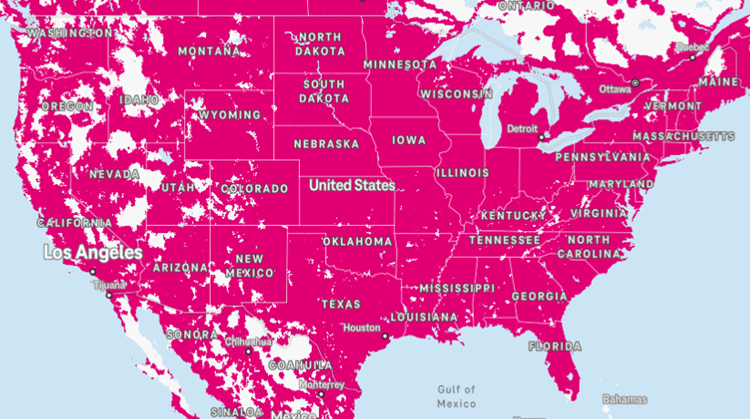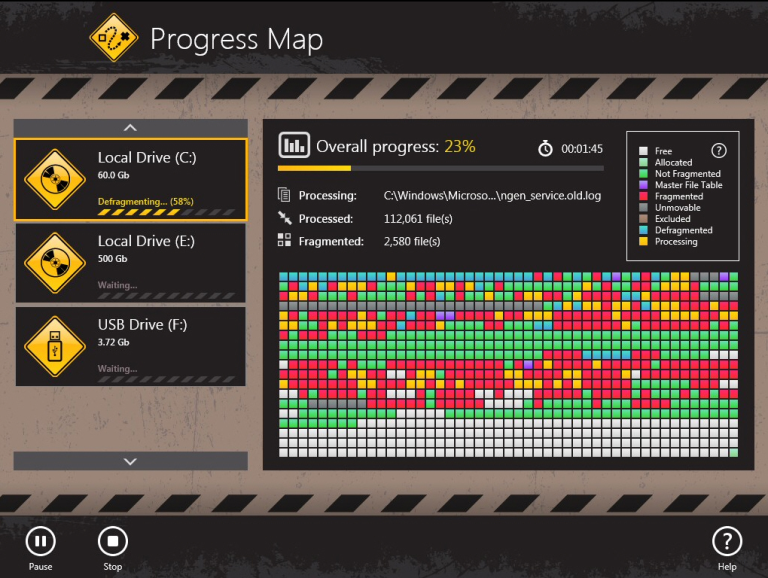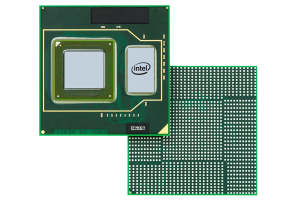In the rapidly evolving landscape of mobile connectivity, T-Mobile USA 4G network stands out with its recent HSPA+ network upgrades. After the demise of its merger with AT&T, T-Mobile is focused on enhancing its infrastructure, now providing 42Mbps HSPA+ service across 175 markets, effectively reaching 186 million people. Despite this impressive coverage, the company remains cautious about transitioning to full LTE services, as CEO Phillip Humm emphasizes a strategic, albeit slow, approach. With the launch of devices like the Samsung Galaxy S Blaze 4G and Nokia Lumia 710, T-Mobile is staking its claim in the competitive 4G market space. As these developments unfold, the latest T-Mobile merger news and the anticipated LTE plans continue to shape the company’s telecommunications trajectory.
T-Mobile USA 4G network evolves against a backdrop of significant shifts in the telecom industry. Following the failed merger with AT&T, the carrier is pushing forward with its HSPA+ infrastructure upgrades to maintain competitiveness. The transition to 4G technology is a pivotal concern, as T-Mobile’s current offerings reach a vast consumer base but lack the aggressive LTE rollout seen by its rivals. Notably, the introduction of new devices such as the Samsung Galaxy S Blaze 4G and Nokia Lumia 710 adds depth to its product lineup, catering to diverse consumer preferences. As discussions on T-Mobile’s future unfold, the focus on expanding network capabilities and strategic device launches remain critical to their long-term success.
The Evolution of T-Mobile USA’s 4G Network
T-Mobile USA has made significant strides in expanding its 4G network, primarily through the completion of HSPA+ network upgrades. This enhancement allows the carrier to deliver impressive speeds of up to 42Mbps in 175 markets, catering to an extensive population of around 186 million. With a key focus on maintaining a competitive edge in the mobile industry, T-Mobile must continue to broaden its HSPA+ offerings while looking forward to more advanced LTE capabilities. The completion of these upgrades reflects T-Mobile’s commitment to innovation, even in the face of challenges following the failed merger with AT&T.
However, despite the recent advancements in its HSPA+ network, T-Mobile USA’s CEO has acknowledged that the transition to LTE is not on an accelerated timeline. While the competition is actively rolling out LTE, T-Mobile appears content with its current trajectory, citing that their HSPA+ network is ‘good enough’ for now. This cautious approach could either benefit T-Mobile in the long run, allowing for thorough planning and deployment of its LTE network, or hinder its customer base as users increasingly demand faster data speeds. As T-Mobile moves forward, it must effectively communicate its strategies to its customers to retain loyalty and enhance user experience.
Insights into T-Mobile’s Merger Plans and Future Strategy
With the recent news regarding the merger with AT&T now behind it, T-Mobile USA is actively seeking new strategies to maintain its foothold in the competitive telecommunications market. The anticipated spectrum resulting from the merger breakdown could be a game-changer for T-Mobile, potentially allowing for expanded coverage and improved service quality. However, securing regulatory approval is the next hurdle, and T-Mobile must devise a strategic approach to navigate this process successfully. In the meantime, the company is capitalizing on its recent HSPA+ upgrades to attract customers who prioritize speed and reliability.
T-Mobile’s strategic positioning in light of the merger developments emphasizes its resilience and future growth potential. While the lack of immediate LTE deployment is a concern, the carrier’s expanded offerings and inclusion of new devices like the Samsung Galaxy S Blaze 4G and Nokia Lumia 710 are efforts to keep customer interest high. The introduction of these devices not only caters to the Android segment but also aims to establish a strong presence in the Windows Phone market, which could become increasingly important as T-Mobile looks to diversify its portfolio and attract a broader audience.
Understanding T-Mobile’s HSPA+ Network Upgrades
T-Mobile USA has positioned itself as a key player in the mobile market through comprehensive HSPA+ network upgrades. Covering 217 markets with speeds of 21Mbps, these upgrades are vital in ensuring that T-Mobile can serve a substantial number of customers effectively, particularly as data consumption continues to rise. By enhancing its network capabilities, T-Mobile not only enhances customer satisfaction but also strengthens its competitive advantage against larger carriers like Verizon and AT&T.
Moreover, the upgrade to HSPA+ has broader implications for T-Mobile’s business model moving forward. As the company aspires to transition eventually to LTE, its current focus on HSPA+ will serve as a foundational platform. With increasing reliance on mobile data for both personal and commercial use, T-Mobile’s efforts to expand its high-speed offerings demonstrate its commitment to staying relevant within an ever-evolving industry landscape.
The Role of Devices in T-Mobile’s Competitive Strategy
With the launch of devices like the Samsung Galaxy S Blaze 4G and Nokia Lumia 710, T-Mobile USA is not only diversifying its product lineup but also attracting a varied customer base. The availability of affordable smartphones has become a compelling factor in gaining market share, especially among budget-conscious consumers. The Lumia 710, in particular, marks a significant milestone as the first Nokia Windows Phone on sale in the U.S., priced affordably at $49.99 with a contract, which could stimulate interest in Windows Phone devices among T-Mobile customers.
In addition to promoting its devices, T-Mobile’s marketing strategies target both Android and Windows Phone enthusiasts, underlining its commitment to offering a spectrum of choices within its portfolio. As consumer preferences shift and evolve, the ability to provide devices that meet varying needs will be crucial for T-Mobile’s sustained growth. In a landscape dominated by major players, creating a diverse yet appealing device ecosystem is essential to capture the interest of new users while retaining existing ones.
Future Outlook of T-Mobile’s LTE Plans
While T-Mobile USA has been relatively slow to adopt LTE compared to its competitors, the company assures stakeholders that it is actively planning a future transition to this faster network. The CEO’s remarks emphasize that while T-Mobile does not feel an immediate urgency to switch to LTE, it acknowledges the growing demand for high-speed data services that LTE can offer. This long-term vision is crucial for T-Mobile to stay competitive, particularly as consumer expectations for connectivity continue to rise.
As T-Mobile keeps its eye on LTE, it must focus on reinforcing its existing HSPA+ network while preparing for potential challenges that come with technological migration. The carrier’s ability to balance current service offerings with future upgrades will determine its market standing. Moving forward, T-Mobile’s strategy will likely involve increasing investment in LTE infrastructure while simultaneously enhancing customer experiences on the HSPA+ network to maintain loyalty and trust among its clientele.
Maximizing T-Mobile’s Market Presence Post-Merger
In the aftermath of its failed merger with AT&T, T-Mobile USA faces the unique challenge of solidifying its market presence independently. The carrier’s strategic direction involves leveraging the benefits of its existing services, particularly the upgraded HSPA+ network, to attract new customers. While T-Mobile’s competitors may dominate the LTE landscape, the company has the opportunity to cultivate a strong niche among consumers who prioritize budget-friendly options and reliable service.
Moreover, T-Mobile’s proactive approach in expanding its device offerings directly correlates with its ability to successfully navigate this post-merger environment. By introducing competitive pricing on both new and existing devices, alongside reliable 4G and HSPA+ services, T-Mobile can continue to gain traction in various market segments. As competition intensifies, T-Mobile’s focus on customer needs will play a pivotal role in shaping its growth trajectory in the coming years.
The Importance of Regulatory Approval for T-Mobile’s Future
As T-Mobile USA endeavors to secure regulatory approval for the spectrum it stands to gain from the merger breakup, the implications for its future are significant. This spectrum could greatly enhance T-Mobile’s ability to roll out new services and improve existing ones. Without it, T-Mobile may struggle to keep pace with competitors who are moving quickly to enhance their 4G and LTE offerings. The regulatory process will require careful navigation as T-Mobile advocates for policies that support its growth.
Successfully obtaining this spectrum is crucial not only for T-Mobile’s ability to upgrade its network but also for its long-term strategic expansion goals. It will enable T-Mobile to build a more robust and competitive infrastructure, which is essential for capturing a greater share of the wireless market. As the company approaches this critical juncture, its communication with regulators and stakeholders will be vital in reassuring customers and investors of its commitment to growth and innovation.
Marketing Strategies for T-Mobile’s Device Portfolio
T-Mobile USA’s success hinges on effective marketing strategies, particularly as it introduces new devices like the Samsung Galaxy S Blaze 4G and Nokia Lumia 710. The unique selling propositions of these devices—affordability, cutting-edge technology, and diverse operating systems—should resonate with different customer demographics. Crafting targeted marketing campaigns that highlight these features will be essential for driving sales and increasing visibility in a crowded market.
In addition, T-Mobile can leverage partnerships and promotions, such as limited-time discounts or bundling services with device purchases. Engaging customers through social media channels and direct marketing efforts can also strengthen brand loyalty and encourage new users to consider T-Mobile’s offerings. As competition intensifies, a robust marketing strategy will be vital for ensuring the success of T-Mobile’s device portfolio and solidifying its market position.
T-Mobile’s Commitment to Innovation in Telecommunications
T-Mobile USA remains dedicated to driving innovation within the telecommunications sector by focusing on network expansion and cutting-edge devices. By prioritizing HSPA+ network upgrades, the company showcases its willingness to invest in technology that enhances customer experience. This dedication to innovation sets T-Mobile apart as a forward-thinking competitor striving to provide quality services in a fast-evolving industry.
Additionally, as T-Mobile assesses advancements like LTE, the integration of new technologies into its offerings will be crucial. The commitment to innovation encompasses not only network enhancements but also fostering collaborations with device manufacturers to ensure a diverse and appealing lineup. By staying on the cutting edge of technology, T-Mobile can attract tech-savvy consumers who seek the best in mobile connectivity.
Frequently Asked Questions
What are the recent T-Mobile USA 4G network upgrades and coverage areas?
T-Mobile USA has recently completed HSPA+ network upgrades in new markets, significantly expanding its 4G footprint. Currently, T-Mobile offers 42Mbps HSPA+ in 175 markets, providing coverage for an estimated 186 million people. Additionally, its 21Mbps HSPA+ service now spans 217 markets, with plans for further expansion following spectrum acquisitions from the AT&T merger breakup, pending regulatory approval.
How does the T-Mobile USA 4G network compare to its competitors?
While T-Mobile USA’s HSPA+ network, branded as 4G, delivers competitive speeds of up to 42Mbps, it exists without a clear roadmap for LTE deployment like its competitors. T-Mobile CEO Phillip Humm has assured that LTE is part of the long-term strategy but emphasized a cautious approach to rapid advancements, focusing instead on optimizing existing HSPA+ services.
What are the new devices supporting T-Mobile USA’s 4G network?
T-Mobile USA has launched several 4G devices, including the Samsung Galaxy S Blaze 4G and the Nokia Lumia 710. These devices are designed to take full advantage of T-Mobile’s HSPA+ network speeds, enhancing user experience with fast data capabilities that align with the company’s ongoing network improvements.
What is the future of T-Mobile USA 4G network and LTE plans?
T-Mobile USA’s future includes a transition to LTE as part of its long-term plans. Although there is no immediate urgency to shift, the company aims to align with industry standards and consumer expectations by advancing its network capabilities beyond HSPA+ in the coming years.
Are there any plans for T-Mobile USA to expand its 4G network coverage?
Yes, T-Mobile USA plans to expand its 4G HSPA+ network coverage as it integrates additional spectrum resulting from the halted AT&T merger. The company’s strategy includes enhancing both existing HSPA+ services and preparing for future LTE capabilities as part of ongoing investments in network infrastructure.
What impact did the T-Mobile merger news with AT&T have on the 4G network development?
The cancellation of the T-Mobile merger with AT&T has prompted T-Mobile to focus on strengthening its competitive position independently. This has led to accelerated HSPA+ network upgrades and future spectrum acquisition efforts, ensuring continued growth and improved service offerings within the T-Mobile USA 4G network.
How successful have T-Mobile USA’s new phone launches been?
The launch of the Samsung Galaxy S Blaze 4G and Nokia Lumia 710 has been well-received, as these devices cater to users seeking robust performance on T-Mobile’s 4G network. Priced competitively, especially the Lumia 710 at $49.99 with a contract, these devices are expected to bolster T-Mobile’s smartphone portfolio and attract new customers.
| Key Point | Details |
|---|---|
| Merger with AT&T | The merger plan with AT&T is no longer active, prompting T-Mobile to seek other options. |
| Network Upgrades | T-Mobile has completed HSPA+ upgrades, expanding its 4G network coverage. |
| 4G Service Speeds | Offers 42Mbps HSPA+ in 175 markets and 21Mbps in 217 markets. |
| LTE Plans | T-Mobile has a long-term plan for LTE but is not rushing its deployment. |
| New Devices | T-Mobile introduced Samsung Galaxy S Blaze 4G and Nokia Lumia 710 at CES 2012. |
| Windows Phone Strategy | The company aims to increase its portfolio with Windows Phones, with Lumia 710 priced at $49.99. |
Summary
The T-Mobile USA 4G network continues to evolve following the cancellation of its merger with AT&T. The company is expanding its HSPA+ network significantly, now reaching over 186 million people with impressive speeds of up to 42Mbps. Although T-Mobile recognizes the need for LTE in the long term, they are not in a hurry to implement it, focusing instead on enhancing their current services and introducing new devices, including attractive Windows Phones. With these strategic moves, T-Mobile is positioning itself to maintain competitiveness in the U.S. telecommunications market.
